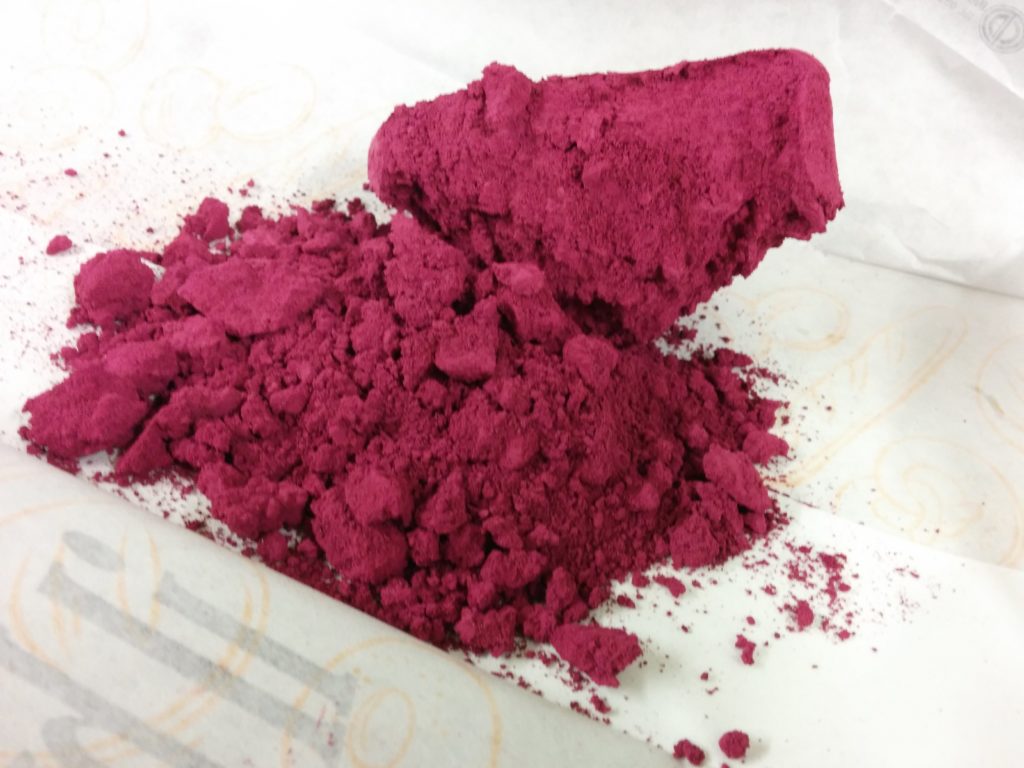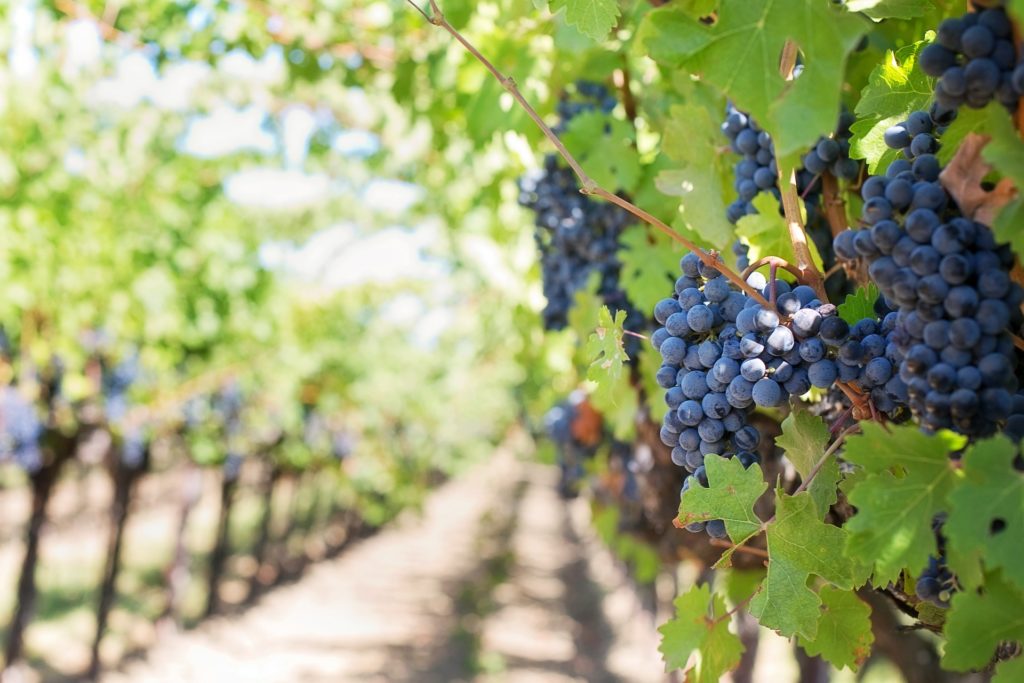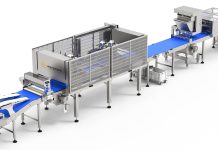The ValorVitis project was an Italian project funded by Ager (grant n. 2010-2222) which last from 2011 to 2015 and investigated the valorisation of the wine industry by-products for the production of high-added value compounds.
Coordinated by the Università Cattolica del Sacro Cuore (Piacenza-Cremona Campus), it saw the participation of other four Italian universities: the Università degli Studi di Milano, the Università degli Studi di Torino, the Università degli Studi di Trento and the Università degli Studi di Scienze Gastronomiche of Pollenzo. Wine-making process generates a substantial volume of solid by-products which are produced in a limited period of the year and have some pollutant characteristics that complicate their management.
The possibility of valorising oenological by-products for the production of high-added value compounds with broad food and food applications would at the same time provide an extra income for wine makers coming from the selling of wastes at a profitable price (while at present the price often does not either cover transportation costs) and reduce the environmental impact of such wastes. Literature scientific works and research projects devoted to the utilization of agro-food by-products testify the importance of such issues and reveal the feasibility of extracting high-value components such as phenolic substances, fibers and oils. In order to be realistically implemented at industrial scale, a recovery strategy should be set-up following an integrated approach that finally leads to the development of a system in which the by-products are completely converted to new products/ingredients/additives with economic-efficient and environmental-friendly technologies.
Furthermore, properties of wine-making by-products are greatly influenced by grape cultivars, vinification processes and climate conditions. On the opposite, recovered products need to have standard characteristics in order to be successful market products. It comes that appropriate technologies able to produce standard high-added products starting from multiple and variable raw materials are required. To reach such an ambitious goal, a complex initiative must be planned and carried out with the collaboration of different partners with complementary competences. ValorVitis project was conceived according to this logic. Experience and knowledge of the involved partners were exploited to develop an efficient working plan to bring to the development of a complete recovery strategy for all the main wine-making wastes: stalks, skins and seeds.
Considering that Italian legislation still obliges wine-makers to send grape marc to distillation, distilled skins and seeds were included in the experimentation in order to evaluate the real advantage in recovering from undistilled materials, or rather the double advantage of recovering alcohol plus high-added value compounds from the same by-products. Grape cultivars investigated in the project were selected based on their diffusion in the Italian Regions of partners (Piemonte, Lombardia and Trentino), but also on their European diffusion. The experimental activity was planned in order to develop suitable protocols to produce standard products starting from mixtures of by-products by different grape cultivars. The final high-added products target of the project were: cellulose, lignin, sugars and phenolic extracts from stalks; oil, seed flour, skin flour and phenolic extracts from skins and seeds; phenolic ingredients obtained from phenolic extracts. Innovative applications (both food and non food) of the recovered products were investigated with the final aim of drafting a product catalogue to present to end-users industries as well as chemical industries. Recovery processes were optimised based also on economic and environment analyses. Some of the results obtained during the project are summarized in this contribution.
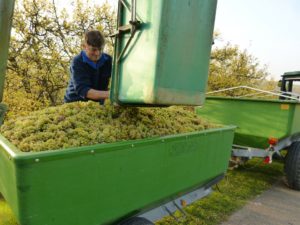 Recovery and valorisation of antioxidants compounds from grape skins. Grape skins and stalks, together with grape seeds, are the principal by-products of wine making process (González-Centeno et al., 2010). Due to their organic nature, their disposal is compulsory and regulated by law. The traditional uses include alcohol production and energetic or agronomic uses, but they are not remunerative applications. On the other hand, such products still contain interesting and valuable substances, such as fibre, tannins, phenolic compounds, and sugars (Cheynier, 2012; Schieber et al., 2001). Thus, under the framework of the Valorvitis project, it was investigated how to valorise grape stalks and skins to obtain high added value components to be used in different industry sectors. The influence of the grape variety, of the vintage and of the distillation process on the functional properties of grape skins extracts were some of the investigated factors.
Recovery and valorisation of antioxidants compounds from grape skins. Grape skins and stalks, together with grape seeds, are the principal by-products of wine making process (González-Centeno et al., 2010). Due to their organic nature, their disposal is compulsory and regulated by law. The traditional uses include alcohol production and energetic or agronomic uses, but they are not remunerative applications. On the other hand, such products still contain interesting and valuable substances, such as fibre, tannins, phenolic compounds, and sugars (Cheynier, 2012; Schieber et al., 2001). Thus, under the framework of the Valorvitis project, it was investigated how to valorise grape stalks and skins to obtain high added value components to be used in different industry sectors. The influence of the grape variety, of the vintage and of the distillation process on the functional properties of grape skins extracts were some of the investigated factors.
- Materials and methods
- Stalks valorisation
Stalks from three red grape varieties, Barbera (BA), Nebbiolo (NE) and Pinot Noir (PN) and three white grapes, Chardonnay (CH), Moscato (MO) and Müller-Thurgau (MT), were investigated as possible biorefiney biomass to be fractionated into the different fractions, cellulose, hemicellulose and lignin (Spigno et al., 2013). Different lignocellulosic fractionation processes were applied for the recovery of fermentable sugars, phenolic compounds and cellulose (Spigno et al., 2014). The obtained hydrolysates were tested as fermentative substrate for Debaryomyces nepalensis NCYC 1026 yeast and before and after a purification process with activated charcoal, optimized for the removal of potentially antifermentative phenolic compounds (Egüés et al., 2013).
- Evaluation of the influence of the vintage and the cultivar on functional properties of grapes skins
Hydro alcoholic extracts were produced from residual skins of the aforementioned red grapes collected in three different vintages in order to evaluate the influence of both variety and vintage on their phenolic content and antioxidant properties, according to the experimental procedure reported in Amendola et al. (2010) and Spigno et al. (2015).
- Skins valorisation
Alcoholic extract of BA grape skins was mixed with maltodextrin, at a constant molar ratio of 0.6 dextrose equivalent/acid gallic equivalent (DE/GAE), and spray-dried with a laboratory scale spray dryer (Büchi Mini Spray Dryer B-290, Switzerland) under previously optimized working conditions. The obtained encapsulated extract was used as functional ingredients for food products (Spigno et al., 2013b).
- Evaluation of the influence of the distillation process on functional properties of grapes skins
Four fermented red grape pomace (Valpolicella, Nero d’Avola, Amarone and Raboso) and one pressed white grape pomace (Vernaccia) were sampled before and after distillation in order to evaluate the influence of distillation process on their phenolic content and antioxidant properties.
- Results and discussion
- Stalks valorisation
The different applied lignocellulosic fractionation processes showed the possibility to recover non-structural sugars, glucose and fructose, up to 16 % by weight of dry stalk, resulting from the residues of grape juice after the destemming process. Hemicellulose sugars were obtained with yields around 5-6 % on a dry weight, which could be used for the production of bioethanol without the need of a purification process. The process also led to the recovery of antioxidant phenolic compounds, mainly resulting from the lignin degradation. Fermentation tests showed higher alcohol production and cell growth in not purified hydrolysates, probably due to the presence of oligosaccharides and additional trace elements in comparison to the reference used synthetic media.
- Evaluation of the influence of the vintage and the cultivar on functional properties of grapes skins
The skins varieties and the vintage significantly influenced the chemical composition of the extracts, while no differences were observed in terms of antioxidant activity. Folin index, with an average value of gallic acid equivalents 4.6 gGAE/100g d.m., and flavonols yields, with a mean value of quercetin equivalents 152 mgQE/100g d.m., were higher in 2011 for all the varieties than in 2012 (mean Folin index= 3.8 gGAE/100g d.m.; mean flavonols content= 130 mgQE/100g d.m.) and 2013 (mean Folin index= 4.1 gGAE/100g d.m.; mean flavonols content= 123 mgQE/100g d.m.) vintages. The vintage 2012 corresponded to higher anthocyanins (wine anthocyanins equivalents 1200 mgWAE/100g d.m. vs 862 and 1054 mgWAE/100g d.m. for 2011 and 2013 vintages respectively) and cinnamic acid equivalents recoveries (3.1 gCAE/100g d.m. vs 1.8 and 2.8 mgWAE/100g d.m. for 2011 and 2013 vintages respectively) from BA, but was unfavourable for the recovery of all phenolic classes from PN and NE. In 2013, PN samples showed the lowest extraction yields for all phenolic groups.
- Skin valorisation
The encapsulation process led to extracts with enhanced water solubility (from 70.6 to 86.1 g solubilised powder/100 g powder for the lowest and the highest level of maltodextrin addition) and thermal stability (differential scanning calorimetry indicated a higher thermal stability with increasing maltodextrin addition. The encapsulation improved the efficacy of the extract against lipid oxidation when added to hazelnut paste (Spigno et al., 2013).
- Evaluation of the influence of the distillation process on functional properties of grapes skins
The distillation process influenced the polyphenols extraction yields. Total phenolic extraction from not distilled skins ranged from 545.93 to 1820.01 mgGAE/100g d.m. Distilled samples showed higher polyphenols extraction yields, ranging from 1393.01 to 2077.61 mgGAE/100g d.m. This behaviour could be related to the conditions applied during the distillation process, which promote the cell wall breakage and therefore the extraction of polyphenols from plant tissues (Moelantes et al., 2010). Distilled samples also showed higher antioxidant and scavenging activity.
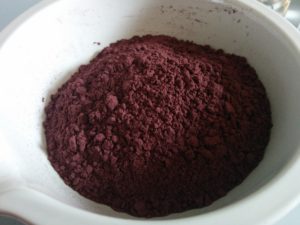 Reintroduction of winemaking by-products into food supply chains. Grape pomace is a rich source of both dietary fibre and phenolic compounds, which have been demonstrated to play a role in decreasing the risk of occurrence of relevant human diseases. Studies on both normocholesterolemic and hypercholesterolemic adults have shown that grape pomace has a positive effect in the prevention of cardiovascular diseases (Jimenez et al., 2008). The anti-diabetic efficiency of grape polyphenols has also been also proven in first-degree relatives of type-2 diabetic patients (Hokayem et al., 2013). These results have raised interest in the use of grape pomace as a healthy ingredient in new functional foods. Moreover, antioxidants and dietary fibre possess multifunctional properties (antioxidant, texturing and coloring properties) that make them interesting as natural additives or food ingredients.
Reintroduction of winemaking by-products into food supply chains. Grape pomace is a rich source of both dietary fibre and phenolic compounds, which have been demonstrated to play a role in decreasing the risk of occurrence of relevant human diseases. Studies on both normocholesterolemic and hypercholesterolemic adults have shown that grape pomace has a positive effect in the prevention of cardiovascular diseases (Jimenez et al., 2008). The anti-diabetic efficiency of grape polyphenols has also been also proven in first-degree relatives of type-2 diabetic patients (Hokayem et al., 2013). These results have raised interest in the use of grape pomace as a healthy ingredient in new functional foods. Moreover, antioxidants and dietary fibre possess multifunctional properties (antioxidant, texturing and coloring properties) that make them interesting as natural additives or food ingredients.
Hence, one of the work packages of the ValorVitis project was aimed at developing an array of food applications for winemaking byproducts to develop new and value-added foods.
- Materials and methods
Various grape pomace samples collected at wineries were separated into skins and seeds, dried at 50 °C, milled and sieved to obtain fractions with specific particle sizes. The skins were then used directly or after phenolic extraction and encapsulation in maltodextrins. The seeds were defatted by SC-CO2 extraction. These fractions were analyzed for total phenolic content (TPC; Folin-Ciocalteu assay), radical scavenging activity (RSA), proanthocyanidins (n-butanol/HCl assay), individual phenolics by UPLC-DAD-MS, in vitro reducing capacity (ferric ion reducing antioxidant power, FRAP (Sri Harsha et al., 2013; Sri Harsha et al., 2014), ability to inhibit mammalian α-amylase and α-glucoamylase (Lavelli et al., 2015a) and anti-glycation activity with a model system using fructose as glycation agent and bovine serum albumin as a target protein (Sri Harsha et al., 2016). The recovered fractions were then used for production of some model foods on pilot-scale.
- Results and Discussion
White grape skins fractions having specific particle sizes were used as fiber- and antioxidant-rich ingredients in tomato puree (3 %). The grape skin fortified tomato purees had significantly higher antioxidant and antiglycation activities than the control tomato puree, which were stable upon thermal stabilization (Lavelli et al., 2014). Addition of grape skin fractions also caused a significant variation in the textural properties of the puree (increase in consistency and complex viscosity) that can be modulated by changing their particle sizes (Lavelli et al., 2015b).
The fortification of fruit candies having a gel-like structure with red grape skin fractions (6 %) increased the antioxidant content and provided a stable, natural red color. Furthermore, grape skin addition improved the textural properties of the candies and promoted the reduction of the processing time, i.e., the length of the concentration step (Cappa et al., 2015).
In a solid food, such as flat bread, higher grape skin incorporation (10 %) could be achieved. The fortified flat bread displayed higher inhibition activity towards starch digestion enzymes than for unfortified bread. Hence, the grape skin fortified bread could have potential to alleviate hyperglycaemia damage (Lavelli et al., 2016a).
Maltodextrin-encapsulated grape skin phenolics comprising anthocyanins and less hydrophilic flavonoids were added as an ingredient to apple puree (1.4 %). Encapsulation greatly increased the solubility and stability of grape skin phenolics. Hence, upon pasteurization the fortified puree had a two-fold higher reducing capacity with respect to apple puree and a stable red color. (Lavelli et al., 2016b).
Powders obtained from three grape pomaces (BA, CH before distillation, CH after distillation) were also added at two concentration levels (0.8 and 1.6 % w/w) into semi-hard and hard cheeses (Italian Toma-like and Cheddar, respectively) to increase their polyphenol content (Marchiani et al., in press). The amount and the type of powder used did not significantly affect the physicochemical parameters of cheese with the exception of pH their values. Italian Toma-like and Cheddar cheeses fortified with CH after distillation powder showed at the end of ripening (30 days and 120 days respectively) the highest TPC and RSA values. Proteolysis and microbial counts did not show statistically significant differences between fortified and control cheeses.
Grape skin flours obtained from grape pomace of CH, MO and PN varieties were used as sources of polyphenolic compounds also in yogurt formulation during three weeks of storage (Marchiani et al., 2016). Yogurt containing grape skin flour presented significantly higher total phenolic content (+ 55%), antioxidant activity (+80 %) and acidity (+25 %) whereas lower pH, syneresis (-10 %) and fat (-20 %) than control. Procyanidin B1 and vanillic acids were detected only in the yogurt added of Pinot noir flour while gallic acid, catechin and quercitrin were the major phenolic compounds found in the yogurts with MO or CH grape skins. Significant differences were highlighted for acidity and lactose content while total phenolic content, antioxidant activity and lactic acid bacteria trend were stable after production and storage.
Overall, the results obtained suggest that winemaking-derived food ingredients could meet the industrial demand for sustainable food additive/ingredients and health promoting compounds.
Grape seed oil: properties and traditional and innovative extraction techniques. Grape seed oil is nowadays used in the food sector for dressing and for cooking: once refined, it has a very high smoke point (245 °C). In addition, grape seed oil is used in cosmetics formulations: products for face, body, dry hair, massages. Why such a large fields of application? Grape seed oil possesses remarkable antioxidant properties, due to its content in polyphenols and tocols (Fiori et al., 2014). Moreover, it has a very high content of unsaturated fatty acids, in particular is the vegetable oil richest in linoleic acid (C18:2, about 70%). To take benefit of its healthy properties, grape seed oil should be consumed/used without being previously refined: actually, its use as cooking oil does not seem particularly attractive.
Grape seed oil can be bought at herbalists, pharmacies with homeopathic sector, natural food stores. Grape seed oil can be recovered through different methods: extraction with hydrocarbon solvents (n-hexane, petroleum ether), extraction using hydraulic presses or screws, extraction with supercritical CO2 (SC-CO2). The ValorVitis project aimed at deepening SC-CO2 extraction of grape seed oil, comparing this technique with n-hexane extraction and mechanical extraction – both in terms of extraction yield and chemical characteristics of the extracted oil – and, finally, comparing grape seed oils extracted from 6 different grape cultivars in different harvesting years.
- Materials and methods
Seeds of the following grape cultivars were utilized for extraction: BA, CH, MO, MT, NE and PN. Grape seed oil was extracted by means of a SC-CO2 extraction apparatus previously described (Fiori, 2007). Tests were performed at variable pressure (in the range 200-500 bar) and temperature (in the range 35-50 °C) and varying the degree of milling of the grape seeds (Duba and Fiori, 2015). For comparative purposes, Soxhlet extractions (SER 148/3, Velp Scientifica, Usmate, Italy) were performed using n-hexane as solvent and mechanical extractions were performed by means of a press machine (Galdabini, PMA/10, Cardano al Campo, Italy). Grapes seed oil was characterized in terms of fatty acid profile, lipid profile (relative abundance of triacylglycerols, diacylglicerols, free fatty acids) and tocol content (tocotrienols, tocopherols).
- Results and discussion
Oil yields from SC-CO2 extraction resulted in the range 10.9–15.0%, with a remarkable dependence on grape cultivar and, for some cultivars, on harvesting years. Oils extracted by SC-CO2 had similar quality, in terms of fatty acid and tocol contents, than those obtained by mechanical extraction. The level of tocopherols and tocotrienols found in grape seed oils supports their potential applications in food, nutraceutical and cosmetic industries (Fiori et al., 2014).
Sensory properties and consumers’ acceptability for food products enriched with grape skin powders
- Introduction
The addition of ingredients rich in dietary fibre and polyphenol compounds into a food matrix can influence the appearance, flavour and texture of functional food and beverages. These induced sensory changes can affect the consumer acceptability. Thus, the investigation of the effect of the enrichment/fortification on the sensory properties of foods should be included in a complete assessment of the prospective use of grape skin powder to obtain innovative food products.
Several food products enriched with grape skin powders developed within the ValorVitis Project were evaluated with different sensory evaluation techniques in order to: 1) describe the sensory properties of the developed food products; 2) assess the acceptability of the developed products by consumers; 3) investigate potential cluster of consumers having different food prototype preferences; 4) understand which sensory attributes of the food prototypes act as drivers of preference for consumers.
- Materials and Methods
Bakery (bread, biscuits), dairy (fresh and semi-aged cheeses), and fruit-based (tomato puree, apple pure, fruit jelly) products enriched with grape skin powders were analyzed. Several panels of assessors were involved in the sensory tests. Seven groups of consumers (N=70-100) voluntarily participated to the liking tests aimed to check the sensory acceptability of all food prototypes. A panel of trained assessors (N=11) performed a descriptive analysis in order to define the sensory profiles of tomato purees enriched with CH grape skin powders having different particle size (Torri et al, 2015). A group of 21 expert cheese tasters performed a free choice profile in order to describe the sensory properties of semi-aged cheese samples obtained incorporating into the curd the grape skin flour from the CH and BA variety (Torri et al, 2016).
- Results and Conclusions
For all tested foods, the addition of grape skin flour modified the sensory profile of the products and influenced the consumers’ liking. In particular, changes in terms of colour, the development of new vegetal flavours, and an increasing of the viscosity, granularity and sourness perception was observed for the tomato puree (Torri et al., 2015) and fresh cheese samples (Torri et al, 2016).
Liking test results revealed segments of consumers with different and opposite preferences. However, in average the best hedonic performances were obtained for bread and cheese. Bread prototypes made using CH grape skin powders were significantly more liked than samples obtained from the BA grape skin. Moreover, consumers tended to prefer bread samples added with the fibrous fraction having the largest particle size. On the contrary, the tomato purees added with the flour having the smallest particle size were the most preferred (Lavelli et al., 2014). Among the food prototypes prepared adding different quantities of grape skin flours, apple puree, cheese, and yogurt (Marchiani et al., 2016) samples received the highest liking scores when the addition of the functional ingredient was low, while the preferred biscuits resulted the samples with the highest grape skin powder incorporation.
In conclusion, different liking results were obtained as a function of the food matrix, since consumers’ preference were affected by several variables: 1) grape variety (CH preferred for bread; BA preferred for semi-aged cheese); 2) particle size (small preferred for tomato puree, large for bread); 3) addition quantity (lower quantity generally preferred, except for biscuits).
References
Amendola D., De Faveri D.M., Spigno G., 2010., Grape marc phenolics: extraction kinetics, quality and stability of extracts. Journal of Food Engineering, 97, 384-392.
Cappa, C., Lavelli, V., Mariotti, M. 2015. Fruit candies enriched with grape skin powders: physicochemical properties. LWT – Food Science and Technology, 62, 569-575.
Cheynier, V., 2012. Phenolic compounds: From plants to foods. Phytochemistry Reviews, 11 (2-3), 153-177.
Duba, K.S., Fiori, L., 2015. Supercritical CO2 extraction of grape seed oil: effect of process parameters on the extraction kinetics. Journal of Supercritical Fluids 98, 33-43.
Egüés I., L. Serrano, D. Amendola, D.M. De Faveri, G. Spigno, J. Labidi, 2013. Fermentable sugars recovery from grape stalks for bioethanol production, Renewable Energy, 60, 553-558.
Fiori, L., 2007. Grape seed oil supercritical extraction kinetic and solubility data: critical approach and modeling. Journal of Supercritical Fluids, 43, 43-54.
Fiori, L., Lavelli, V., Duba, K.S., Sri Harsha, P.S.C., Mohamed, H.B., Guella, G., 2014. Supercritical CO2 extraction of oil from seeds of six grape cultivars: modeling of mass transfer kinetics and evaluation of lipid profiles and tocol contents. Journal of Supercritical Fluids, 94, 71-80.
González-Centeno M.R., Rosselló C., Simal S., Garau M.C., López F., Femenia A., 2010. Physico-chemical properties of cell wall materials obtained from ten grape varieties and their byproducts: grape pomaces and stems. LWT – Food Science and Technology, 43, 1580-1586.
Hokayem, M., Blond, E., Vidal, H., Lambert, K., Meugnier, E., Feillet-Coudray, C., Coudray, C., Pesenti, S., Luyton, C., Lambert-Porcheron, S., Sauvinet, V., Fedou, C., Brun, J.F., Rieusset, J., Bisbal, C., Sultan, A., Mercier, J., Goudable, J., Dupuy, A.M., Cristol, J.P., Laville, M., Avignon, A. 2013. Grape polyphenols prevent fructose-induced oxidative stress and insulin resistance in first-degree relatives of type 2 diabetic patients. Diabetes Care, 36(6), 1454–1461.
Jimenez, P.J., Serrano, J., Tabernero, M., Diaz-Rubio, M. E., Arranz, S., Garcia-Diz, L., Goñi, I., Saura-Calixto, F. 2008. Effects of grape antioxidant dietary fiber in cardiovascular disease risk factors. Nutrition, 24, 646–653.
Lavelli V., Sri Harsha, P.S.C., Spigno, G. 2016b. Modelling the stability of maltodextrin-encapsulated grape skin phenolics used as a new ingredient in apple puree. Food Chemistry, 209, 323-331.
Lavelli, V., Sri Harsha, P.S.C., Ferranti, P., Scarafoni, A., Iametti, S. 2016a. Grape skin phenolics as inhibitors of mammalian α-glucosidase and α-amylase – effect of food matrix and processing on efficacy. Food and Function, 7, 1655-1663.
Lavelli, V., Sri Harsha, P.S.C., Fiori, L. 2015a. Screening grape seeds recovered from winemaking byproducts as sources of reducing agents and mammalian a-glucosidase and a-amylase inhibitors. International Journal of Food Science & Technology, 50, 1182–1189.
Lavelli, V., Sri Harsha, P.S.C., Mariotti, M., Marinoni, L., Cabassi, G. 2015b. Tuning Physical Properties of Tomato Puree by Fortification with Grape Skin Antioxidant Dietary Fibre. Food and Bioprocess Technology, 8, 1668–1679.
Lavelli, V., Sri Harsha, S.P.C., Torri, L., Zeppa, G., 2014. Using of winemaking by-products as an ingredient for tomato puree: the effect of particle size on product quality. Food Chemistry, 152, 162-168.
Marchiani R., Bertolino M., Ghirardello D., McSweeney P.L.H., Zeppa G. (in press). Physicochemical and nutritional qualities of grape pomace powder-fortified semi-hard cheeses. Journal of Food Science and Technology, DOI 10.1007/s13197-015-2105-2108.
Marchiani, R., Bertolino, M., Belviso, S., Giordano, M., Ghirardello, D., Torri, L., Piochi, M., Zeppa, G., 2016. Yogurt enrichment with grape pomace. Effect of grape cultivar on physico-chemical, microbiological and sensory properties. Journal of Food Quality, 39, 77-89.
Marchiani, R., Bertolino, M., Belviso, S., Giordano, M., Ghirardello, D., Torri, L., Piochi, M., Zeppa, G., 2016. Yogurt enrichment with grape pomace. Effect of grape cultivar on physico-chemical, microbiological and sensory properties. Journal of Food Quality, 39, 77-89.
Moelantes, K.R.N., Cardinales, R., Van Bruggenhout, S., Van Loey, A.M., Moldenares, P., Hendricx, M.E., 2014. A Review on the relationships between processing, food structure and rheological properties of plant-tissue-based food suspensions. Comprehensive Review in Food Science and Food Safety, 13, 241–260.
Schieber, A., Stintzing, F.C., Carle, R., 2001. By-products of plant food processing as a source of functional compounds – Recent developments. Trends in Food Science & Technology, 12, 401–413.
Spigno G., Donsì F., Amendola D., Sessa M., Ferrari G., De Faveri D.M., 2013. Nanoencapsulation systems to improve solubility and antioxidant efficiency of a grape marc extract into hazelnut paste. Journal of Food Engineering, 114(2), 207-214.
Spigno G., Maggi L., Amendola D., Dragoni M. De Faveri D.M., 2013. Influence of cultivar on the lignocellulosic fractionation of grape stalks. Industrial Crops and Products, 46, 283–289.
Spigno, G., Amendola, D., Dahmoune, F., Jauregi, P., 2015. Colloidal gas aphrons based separation process for the purification and fractionation of natural phenolic extracts. Food and Bioproducts Processing, 94, 434-442.
Spigno, G., Moncalvo, A., De Faveri, D.M., Silva, A., 2014. Valorisation of stalks from different grape cultivars for sugars recovery. Chemical Engineering Transactions, 37, 745-750.
Sri Harsha, P.S.C., Gardana, C., Simonetti, P., Spigno G., Lavelli V. 2013. Characterization of phenolics, in vitro reducing capacity and anti-glycation activity of red grape skins recovered from winemaking by-products. Bioresource Technology, 140, 263–268.
Sri Harsha, P.S.C., Lavelli, V., Scarafoni, A. 2014. Protective ability of phenolics from white grape vinification by-products against structural damage of bovine serum albumin induced by glycation. Food Chemistry, 156, 220–226.
Sri Harsha, P.S.C., Mesias, M., Lavelli, V., Morales, F.J. 2016. Grape skin extracts from winemaking by-products as a source of trapping agents for reactive carbonyl species. Journal of the Science of Food and Agriculture, 96, 656–663.
Torri, L., Piochi, M., Lavelli, V., Monteleone, E., 2015. Descriptive sensory analysis and consumers’ preference for dietary fibre- and polyphenol- enriched tomato purees obtained using winery by-products. LWT-Food Science and Technology, 62, 294-300.
Torri, L., Piochi, M., Marchiani, R., Zeppa G., Dinnella, C., Monteleone, E., 2016. A sensory- and consumer based approach to optimize cheese enrichment with grape skin powders. Journal of Dairy Science, 99, 194-204.
Spigno1, L. Marinoni1; G. Zeppa2, V. Lavelli3, L. Fiori4, L. Torri5
1Istituto di Enologia e Ingegneria Agro-Alimentare, Università Cattolica del Sacro Cuore, Via Emilia Parmense 84, 29122 Piacenza, Italy, giorgia.spigno@unicatt.it, lauramarinoni1982@gmail.com
2 DISAFA, Department of Agricultural, Forest and Food Science, University of Turin, L.go P. Braccini 2, 10095 Grugliasco (TO), Italy, giuseppe.zeppa@unito.it
3 DeFENS, Department of Food, Environmental and Nutritional Sciences, University of Milan, via Celoria 2, 20133 Milan, Italy, vera.lavelli@unimi.it
4 Civil, Environmental and Mechanical Engineering Department, University of Trento, via Mesiano 77, 38123 Trento, Italy, luca.fiori@unitn.it
5 University of Gastronomic Sciences, Piazza Vittorio Emanuele 9, 12042 Bra (CN), Italy, l.torri@unisg.it

